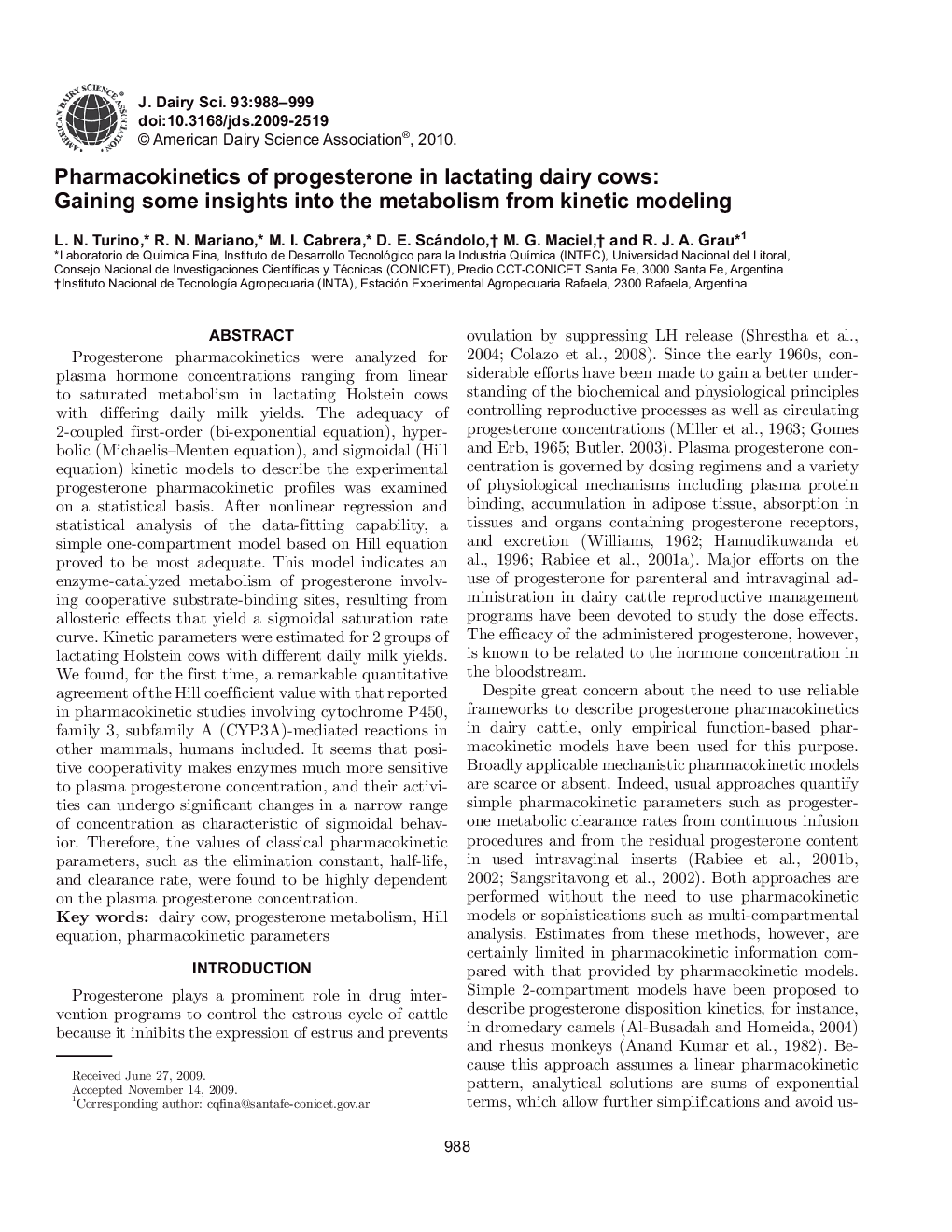| Article ID | Journal | Published Year | Pages | File Type |
|---|---|---|---|---|
| 10981823 | Journal of Dairy Science | 2010 | 12 Pages |
Abstract
Progesterone pharmacokinetics were analyzed for plasma hormone concentrations ranging from linear to saturated metabolism in lactating Holstein cows with differing daily milk yields. The adequacy of 2-coupled first-order (bi-exponential equation), hyperbolic (Michaelis-Menten equation), and sigmoidal (Hill equation) kinetic models to describe the experimental progesterone pharmacokinetic profiles was examined on a statistical basis. After nonlinear regression and statistical analysis of the data-fitting capability, a simple one-compartment model based on Hill equation proved to be most adequate. This model indicates an enzyme-catalyzed metabolism of progesterone involving cooperative substrate-binding sites, resulting from allosteric effects that yield a sigmoidal saturation rate curve. Kinetic parameters were estimated for 2 groups of lactating Holstein cows with different daily milk yields. We found, for the first time, a remarkable quantitative agreement of the Hill coefficient value with that reported in pharmacokinetic studies involving cytochrome P450, family 3, subfamily A (CYP3A)-mediated reactions in other mammals, humans included. It seems that positive cooperativity makes enzymes much more sensitive to plasma progesterone concentration, and their activities can undergo significant changes in a narrow range of concentration as characteristic of sigmoidal behavior. Therefore, the values of classical pharmacokinetic parameters, such as the elimination constant, half-life, and clearance rate, were found to be highly dependent on the plasma progesterone concentration.
Related Topics
Life Sciences
Agricultural and Biological Sciences
Animal Science and Zoology
Authors
L.N. Turino, R.N. Mariano, M.I. Cabrera, D.E. Scándolo, M.G. Maciel, R.J.A. Grau,
